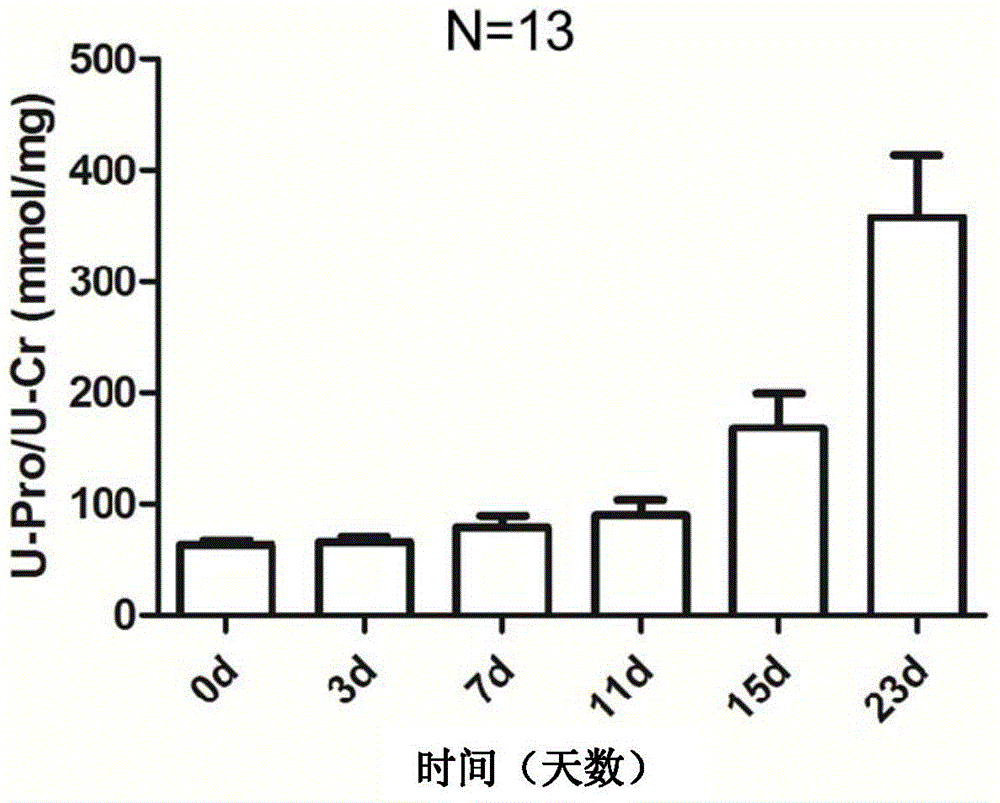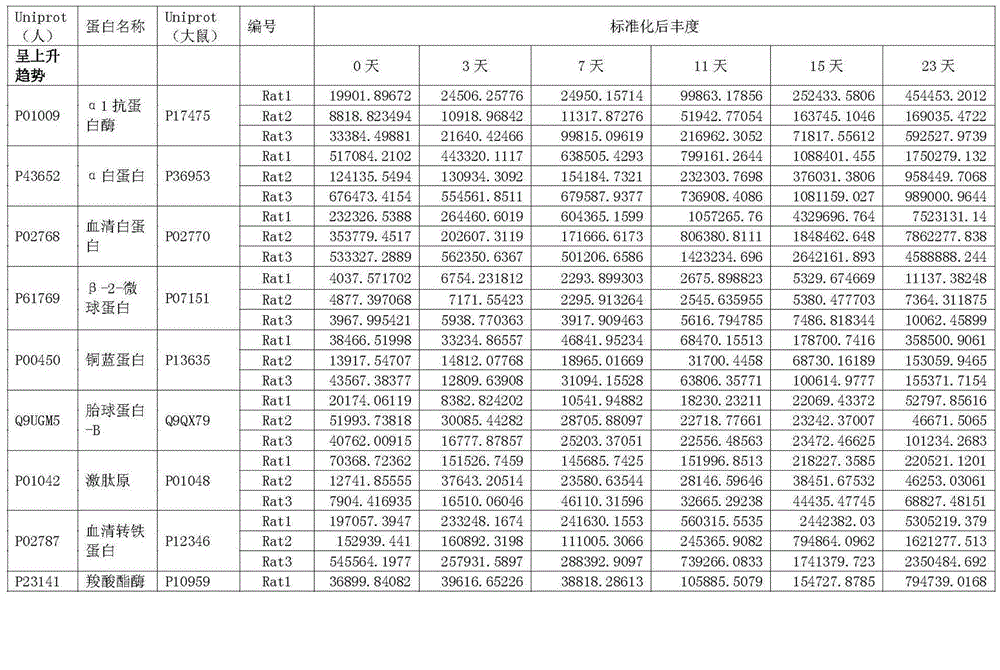Protein marker of focal segmental glomerulosclerosis
A glomerular sclerosis and segmental technology, applied in the field of protein markers, can solve the problems of inability to distinguish the severity of the disease, early diagnosis of patient survival rate is not helpful, and not comprehensive enough
- Summary
- Abstract
- Description
- Claims
- Application Information
AI Technical Summary
Problems solved by technology
Method used
Image
Examples
Embodiment 1
[0034] Materials and Reagents
[0035] 1) Instrument: rat metabolic cage: purchased from Beijing Jiayuan Xingye Technology Co., Ltd. TripleTOF5600 mass spectrometer: purchased from ABI Company; Agilent1200 high performance liquid chromatograph: purchased from Agilent Company; MillliQ RG ultrapure water system: purchased from Millipore Company; ): purchased from Michrom Bioresources.
[0036] 2) Main reagents: deionized water is from MillliQ RG ultrapure water system; chromatographic grade acetonitrile, formic acid and methanol are produced by Fisher; iodoacetamide (IAA), ammonium bicarbonate and dithiothreitol (DTT) are from Merck The company purchased; sequencing-grade trypsin, ConA agarose were purchased from Sigma; all antibodies were from Abcam.
[0037] 3) Animals: Male SD rats (weight 250-250 g) were purchased from Beijing Institute of Medical Experimental Animals and raised in a standard feeding environment.
PUM
 Login to View More
Login to View More Abstract
Description
Claims
Application Information
 Login to View More
Login to View More - R&D
- Intellectual Property
- Life Sciences
- Materials
- Tech Scout
- Unparalleled Data Quality
- Higher Quality Content
- 60% Fewer Hallucinations
Browse by: Latest US Patents, China's latest patents, Technical Efficacy Thesaurus, Application Domain, Technology Topic, Popular Technical Reports.
© 2025 PatSnap. All rights reserved.Legal|Privacy policy|Modern Slavery Act Transparency Statement|Sitemap|About US| Contact US: help@patsnap.com



